
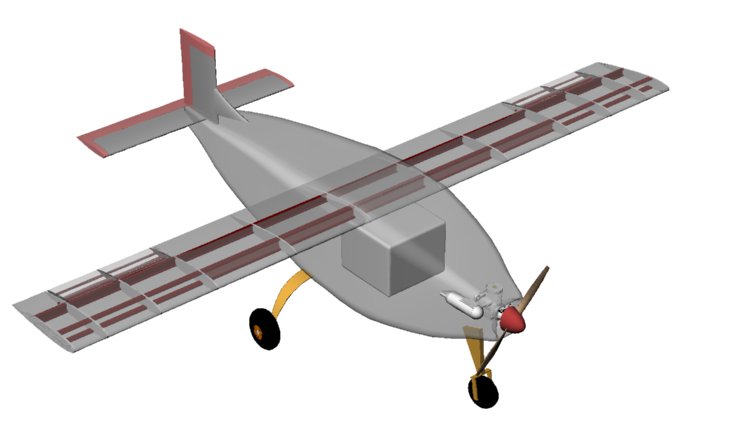
Design of a Remotely Piloted Aircraft : ODTÜ-1M
Design Project Started in
AEE 462 Aeronautical Structures Design in Spring 2001
Mehmet A. Akgün


(Drawings by Jaafar Hajibrahim)
History of ODTÜ-1 Project:
ODTÜ-1 was aimed to be a fiberglass RPV of a maximum take-off weight of 15 kg with a payload capacity of 6 kg. I did the preliminary design in November of 1988 and, during the following 4 years, assigned projects related to it to students taking the structural design course. In those 4 years, I assigned more than 25 ODTÜ-1-related projects to individual teams covering topics like material testing of fiberglass purchased from the market, analysis and testing of mechanically fastened fiberglass coupons, design of the wing, tail, fuselage, landing gear and engine support structure, design and manufacturing of the wooden and fiberglass tooling (i.e., moulds) for the wing and fuselage, manufacturing of a wing for strength testing, manufacturing of the actual wing, fuselage and tail, stability analysis, and weight and balance study. Each year's projects were aimed to be built upon the previous ones and, therefore, the students were expected to write good reports. For example, the wing was designed in 1988-89, the test wing was manufactured in 1989-90 and it was instrumented with strain gages and tested in 1991-92. Projects unrelated to ODTU-1 were also assigned within the course, such as the design and construction of a fiberglass seat capable of a certain level of g loading, impact design of fiberglass structures, and so on.
By 1992, various parts of ODTÜ-1 were manufactured from fiberglass but, because of the limitations of our manufacturing capabilities, the fuselage turned out be too heavy and the actual wing could not be completed. But the test version of the wing (which had the same structural design as the actual one except it was a half wing of semi span 1.25 m) proved that it was overstrength (it had three spars).
In the spring semester of 2001, the students taking the course were enthusiastic about the project and we decided to revive it. This time, we designed it as a Metal aircraft, hence the suffix M in ODTÜ-1M. The appearance and configuration are the same as ODTÜ-1, the fiberglass version which never came close to flying. ODTÜ-1M has all the details of a conventional manned stressed-skin metallic aircraft structure: frames, stiffeners, ribs, spars, skin elements riveted to the skeletal structure, etc. Building a metallic aircraft at this scale has its problems and is not an easy task. The students with whom we designed the aircraft and started the manufacturing have graduated. Currently we continue with the manufacturing process with a few voluntary graduate students who have other jobs to do. We expect to complete the manufacturing and have the maiden flight by May 2003.
Below are some photographs from 1989-1991 showing our manufacturing activities at the time. Students in those pictures are now aeronautical engineers of 10 years. In addition, there are current photographs of ODTÜ-1M structure. Description of ODTÜ-1M and other information follow the photographs.
Photographs of ODTÜ-1 (Fiberglass Version) Manufacturing and Test Activities (1989-1991):
Test of a fiberglass bolted joint................... The three spars of the structural test wing...


Preparing the wooden tooling for the ribs.......................... The wooden tooling for the fiberglass ribs.....


The beginning of wing manufacturing process.................. The inner structure of the wing manufactured...


The wing before mounting for test........... The wing mounted for testing...


The wing after the structural test............. Layers of the fuselage female tooling being wetted.


The male tooling for the fuselage with gel coat on it........
It is in place to manufacture the female tooling.

The female fuselage tooling is curing....

Photographs of ODTÜ-1M Structure (Metal Version):
Skeletal center fuselage(left), the same with skeletal wing on it.
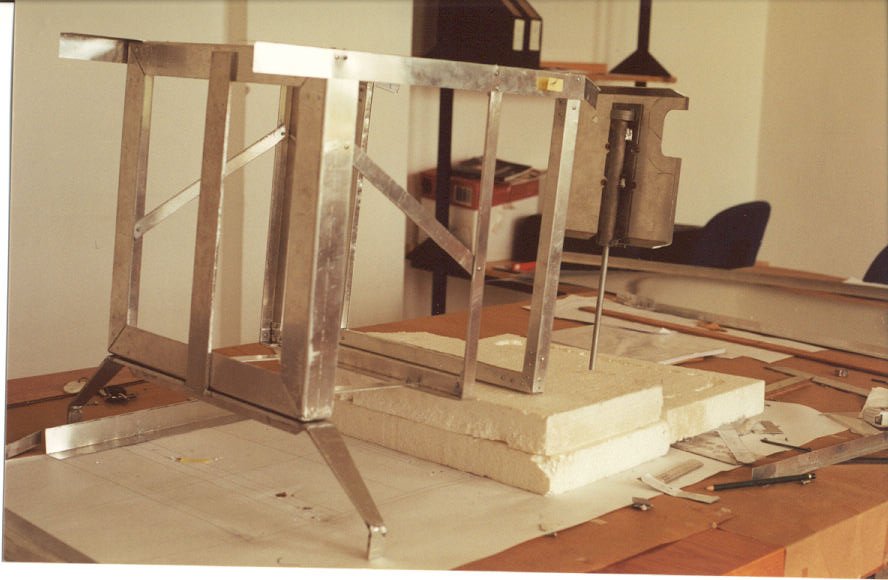
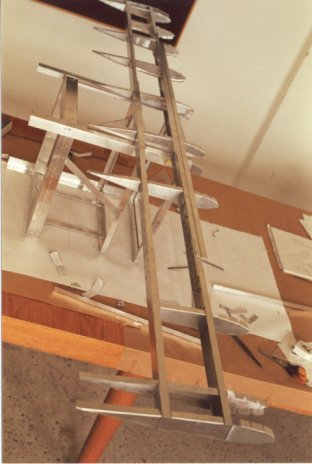
Skeletal wing with right aileron and its servo .................. Lower skin riveted to the wing skeleton.
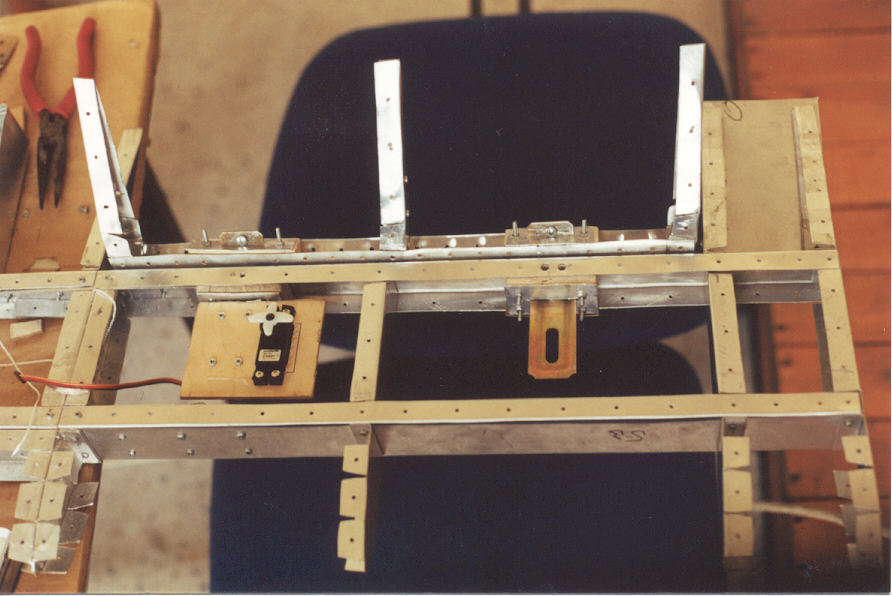
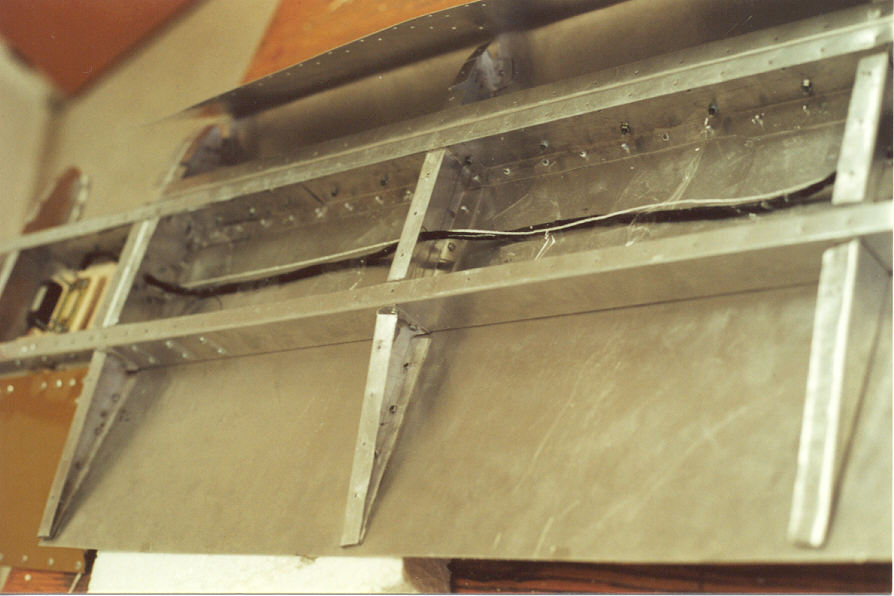
Lower skin riveted to the wing skeleton (full view) ......... Skeletal empennage (fixed and moving surfaces).
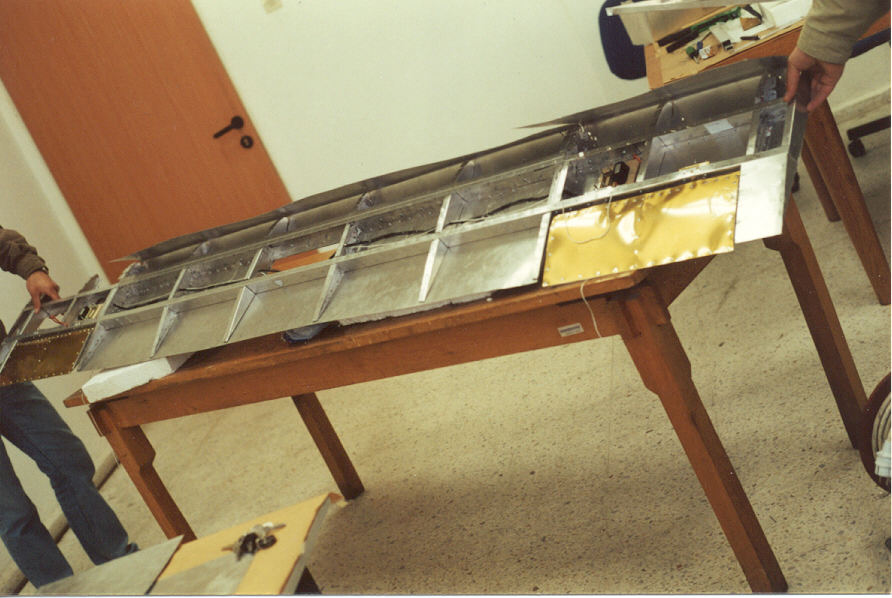
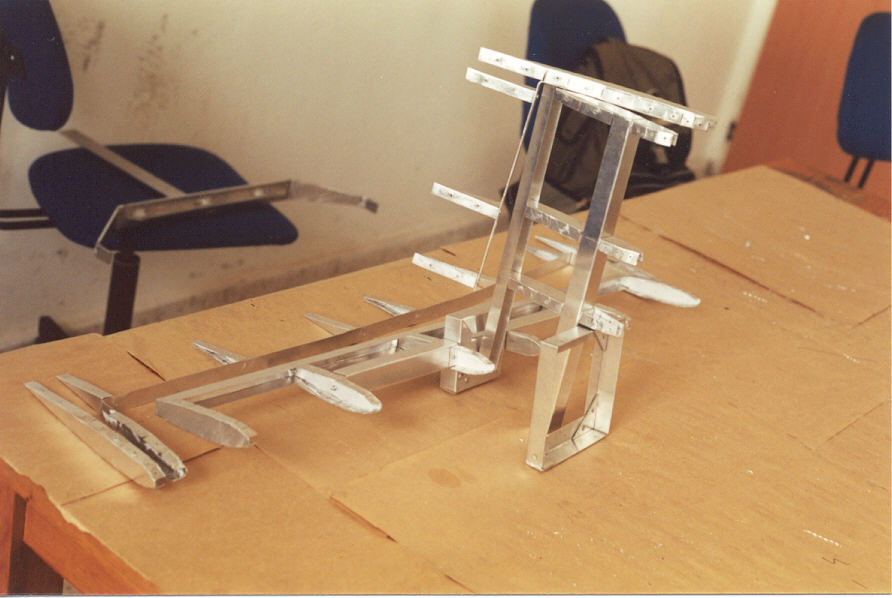
(updated: 7 Jan 2003. Much more progress has been made in manufacturing than the above photos
indicate. New photos will soon be placed here.)
Description of ODTÜ-1M:
ODTÜ-1M will be powered by a 3-HP model aircraft engine. It is a high-wing aircraft with a nose landing gear. The wing span is 2.5 m and the aircraft length is 1.9 m. The fuselage cross-section is 40 cm x 40 cm at the largest section. The initial aim for maximum operational altitude from local ground level is 400 m not to exceed 1400 m from the sea level.We have made minor configurational changes to the original ODTÜ-1 such as moving the main landing gear aft by 10 cm and replacing the tapered fin by a uniform one. The fuselage consists of flat panels instead of curved ones as in the original one. ODTÜ-1M has a semi-monocoque aluminium fuselage, wing and empennage. All of the structure is aluminum with riveted joints and splices. One of our most serious problems was to get 2-mm rivets, which we couldn't. We are using larger size rivets. There will be more than 1200 rivets on the aircraft. We expect to be able to carry a payload of 3 kg, giving a maximum T-O weight of 16.5 kg. Normally, an aircraft of this size would not be made of metal in such detail because of the problems and limitations associated with manufacturability. However, the purpose was to teach the students the rules of designing semi-monocoque metal structures as well as to experience the satisfaction of designing a system that flies.
Engine that will power ODTÜ-1M: OS MAX 108F

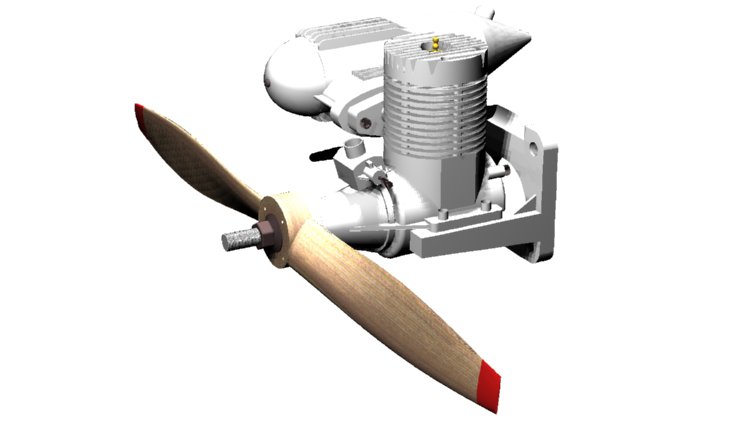
Internal wing structure of ODTÜ-1M
(the final version doesn't have the cutouts in the spar web at the outboard wing)
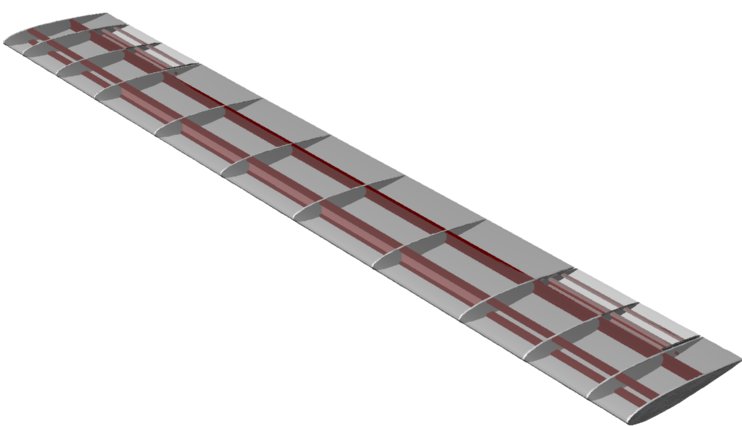
Nose landing-gear design
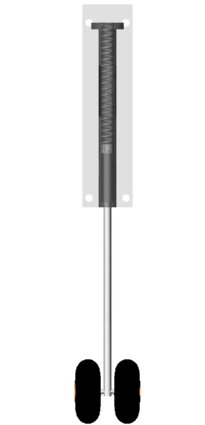
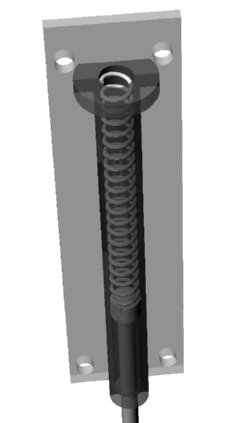
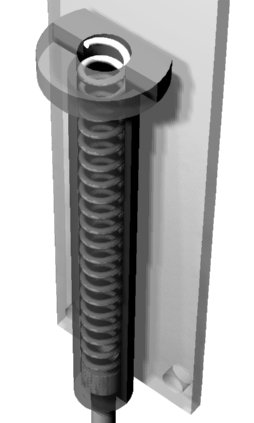

Close-up view of horizontal stabilizer and elevator(left), close-up view of wing tip(right)
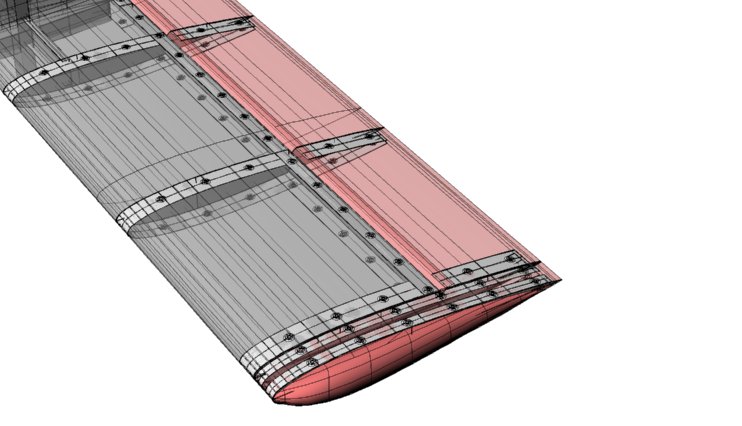
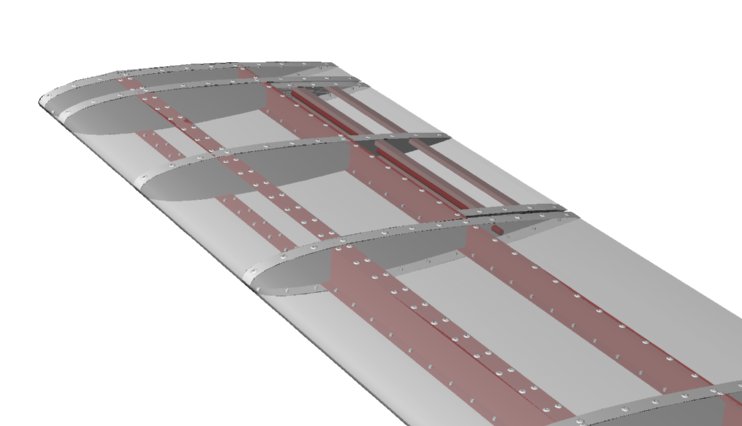
Close-up view of the internal wing structure near an aileron
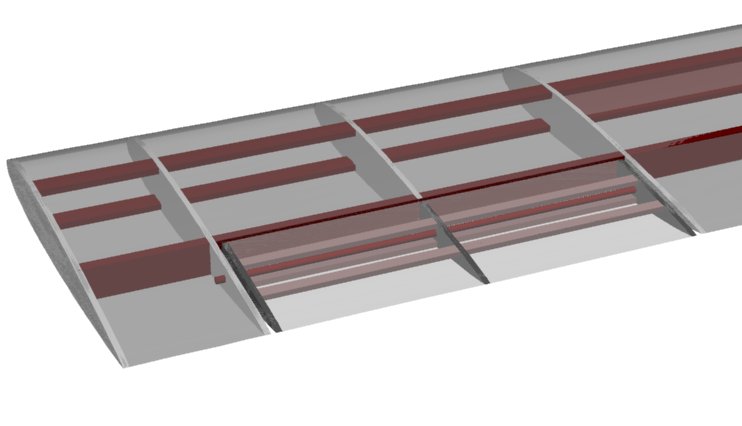
The start of the ODTÜ-1M project: Spring 2001 in AEE 462. Below are the tasks assigned to individual teams at the time. The team members already graduated and most of them are no longer related to the project.